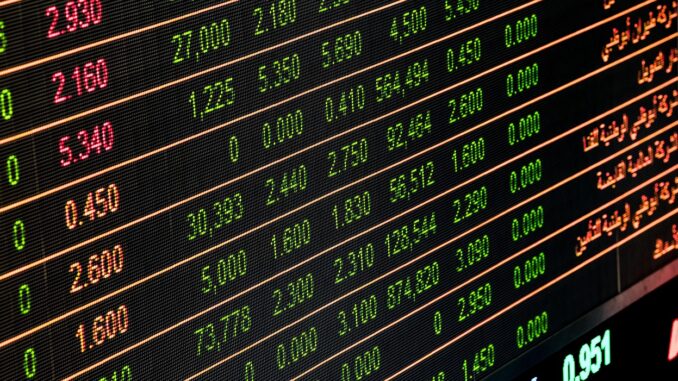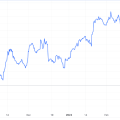
Stock market indices are essential tools for investors and analysts, offering insights into the overall performance of financial markets. Two prominent global indices, the S&P 500 and FTSE 100, provide valuable information about the United States and the United Kingdom’s economic health. In this article, we will explore the histories, compositions, and significance of these indices better to understand their roles in the global financial landscape.
S&P 500: The Backbone of the U.S. Economy
1. Historical Background
The S&P 500, often referred to as the Standard & Poor’s 500, was introduced in 1957 by the financial services company Standard & Poor’s. It is one of the most widely followed indices globally and represents the performance of 500 of the largest companies listed on U.S. stock exchanges.
2. Composition
The S&P 500 includes companies from various sectors, such as technology, healthcare, financials, and consumer discretionary. It features industry giants like Apple, Microsoft, Amazon, and Berkshire Hathaway.
3. Market Capitalization-Weighted
The S&P 500 is a market capitalization-weighted index, which means that larger companies with higher market capitalization have a more significant impact on the index’s performance.
4. Global Significance
The S&P 500 is not just a barometer for the U.S. economy; it is often used as a global indicator. Movements in the S&P 500 are closely watched for indications of worldwide economic trends.
FTSE 100: The Pulse of the UK Market
1. Origin and Development
The FTSE 100, created in 1984 by the Financial Times Stock Exchange (now called the London Stock Exchange Group), represents the performance of the top 100 companies listed on the London Stock Exchange. It is one of the key indices in the United Kingdom.
2. Composition
The FTSE 100 includes companies from various sectors, such as finance, energy, consumer goods, and healthcare. Constituents comprise well-known names like BP, HSBC, Unilever, and GlaxoSmithKline.
3. Free-Float Market Capitalization-Weighted
Similar to the S&P 500, the FTSE 100 follows the free-float market capitalization-weighted methodology. This considers the number of shares available for trading and their market capitalization.
4. UK and International Impact
The FTSE 100 is a significant indicator of the UK stock market’s performance and is also monitored by international investors as a reflection of European economic trends.
Comparative Analysis
Let’s conduct a comparative analysis of the S&P 500 and the FTSE 100 to understand their differences and significance.
Geographic Focus
– S&P 500
The S&P 500 focuses on the United States, serving as a primary indicator of the U.S. economy’s health.
– FTSE 100
The FTSE 100 is centered on the United Kingdom but has a broader impact, reflecting European economic trends.
Number of Constituents
– S&P 500
The S&P 500 comprises 500 constituents, offering a broader representation of the U.S. market.
– FTSE 100
The FTSE 100 consists of 100 constituents, making it a smaller and more focused index.
Method of Calculation
– S&P 500
The S&P 500 is a market capitalization-weighted index, where larger companies have a more substantial influence.
– FTSE 100
The FTSE 100 also follows the free-float market capitalization-weighted methodology, providing a more balanced representation of the index.
Sectoral Representation
– S&P 500
The S&P 500 includes a diverse range of sectors, with technology and healthcare playing significant roles.
– FTSE 100
The FTSE 100 is composed of sectors like finance, energy, and consumer goods, reflecting the UK’s economic diversity.
Global Impact
– S&P 500
The S&P 500 is not only vital for the U.S. economy but also holds a global significance, making it one of the most closely monitored indices worldwide.
– FTSE 100
The FTSE 100, while primarily representing the UK market, is an important index for international investors looking to gain exposure to European economic trends.
Significance and Impact
Both the S&P 500 and the FTSE 100 are influential indicators with distinct regional and global impacts.
– The S&P 500 is a barometer for the U.S. economy and is considered a bellwether for global economic trends. It holds a central role in the investment decisions of investors worldwide.
– The FTSE 100 plays a vital role in reflecting the performance of the UK economy, and its impact extends to international investors seeking insights into European financial markets.
These indices are pivotal for evaluating the performance of investment portfolios and are used as benchmarks for investment strategies, helping investors gauge economic trends and make informed financial decisions.
The S&P 500 and the FTSE 100 are integral components of the global financial landscape, representing two significant economic regions. While the S&P 500 is a key indicator of the U.S. economy’s performance and a global trendsetter, the FTSE 100 reflects the economic health of the United Kingdom and has an impact on European markets.
Both indices offer unique insights into their respective regions and are essential tools for investors, traders, and analysts navigating the complexities of the global stock markets. Understanding the nuances of these indices is crucial for making informed investment decisions and assessing economic trends on regional and global scales.








